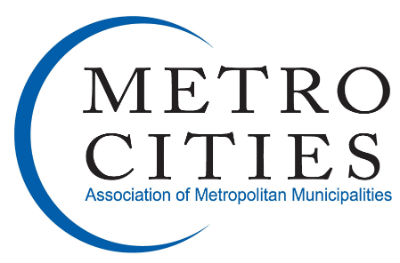In This Issue:
November State Budget Forecast
This week, the Office of MN Management and Budget (MMB) released its November Budget and Economic Forecast. The forecast shows an anticipated budget surplus of $17.6 billion for FY 2024-25. In their briefing, MMB officials discussed economic assumptions that affect revenues, spending and revenue factors that inform the forecast, the long-term budget outlook and the state’s budget reserve.
Budget Forecast Summary and Highlights
- FY 2022-23 is expected to close $5 billion higher than previous estimates.
- Of the projected $17.6 billion general fund balance, $11.6 billion is left over from the previous biennium.
- FY 2022-23 shows a structural budget balance of $8.149 billion; FY 24-25 shows a structural balance of $6.327 billion, and FY 26-27 shows a structural balance of $8.43 billion. Structural balances represent money collected in a biennium subtracted from projected spending, and will help to inform permanent revenue and spending decisions.
- General fund revenues are expected to exceed spending through FY 2027.
- This forecast anticipates a mild U.S. recession beginning next year with slower economic growth through 2027.
Risks Identified by Forecasters
- Inflationary impacts
- Changes in monetary policy
- Slow-growing economy being vulnerable to shocks
- Volatility in corporate profits and capital gains
- The amount of time (31 months) before the end of FY 2024-25.
This forecast and the February forecast will define fiscal parameters for the Legislature and Governor as lawmakers prepare to set the state’s budget. Click HERE to view the budget documents.
Governor Walz and legislative leaders responded to the forecast. Governor Walz focused on a need for investments in education and infrastructure and rebates to Minnesotans. He stated that he supports a partial repeal of the Social Security tax, affordable childcare, aids to local governments, funding for school mental health counselors and a diversified teacher workforce.
House Majority Leader Jamie Long, Majority Whip Athena Hollins and incoming Senate Majority Leader Kari Dziedzic committed to holding hearings on equity and inclusion, bonding projects, climate initiatives, housing, childcare, education and other issues. Incoming House Minority Leader Lisa Demuth said legislators should focus on giving much of the surplus back to Minnesotans and spoke in favor of funding for law enforcement and public safety. Incoming Senate Majority Leader Mark Johnson discussed inflation and a looming recession and cautioned on tax and spending increases.
Click HERE, for a House Session Daily article containing video clips with remarks by the Governor and legislative leaders.
Questions? Contact Patricia Nauman at 651-215-4002 or [email protected].
Transportation Funds Forecast
A Transportation Funds Forecast was released on December 7th. The forecast shows that Highway User Tax Distribution (HUTD) Fund revenues are anticipated to increase by less than previously forecasted. When compared to previous estimates, HUTD sources are projected to bring in $184 million less in FY 2022-23 and $209 million less in FY 2024-25. This represents a 3.5% decrease in expected revenue in FY 2022-23 and a 3.8% decrease in FY 2024-25.
When compared to previously forecasted revenue amounts, the gas tax is down $16 million (-1.7%), tab fee revenue is down $53 million (-6%), and motor vehicle sales tax revenue is down $31 million (-4.9%). The flattening (and in some cases decreasing) of these HUTD revenue sources means that distributions for the County State Aid Highway (CSAH) and Municipal State Aid Streets (MSAS) systems are expected to be reduced. That specific amount has not been determined at this point.
The Transportation Funds Forecast provides a brief overview of the federal funds provided to Minnesota as a part of the Infrastructure Investment and Jobs Act (IIJA). Through the federal law, Minnesota is allocated $4.5 billion over five years in formula funds for highways and bridges. This figure includes an additional $240 million per year on top of what the state currently receives in federal formula funds. MnDOT will require additional budget authority to spend these additional funds. The forecast document notes that the IIJA also funded new and expanded discretionary grant programs and that nearly all federal funds require a 20 percent state or local match.
Click HERE to read the Transportation Funds Forecast in full, where you will find more detailed information on the Highway User Tax Distribution Fund and its revenue sources.
Contact Mike Lund at [email protected] or 651-215-4003 with any questions.
